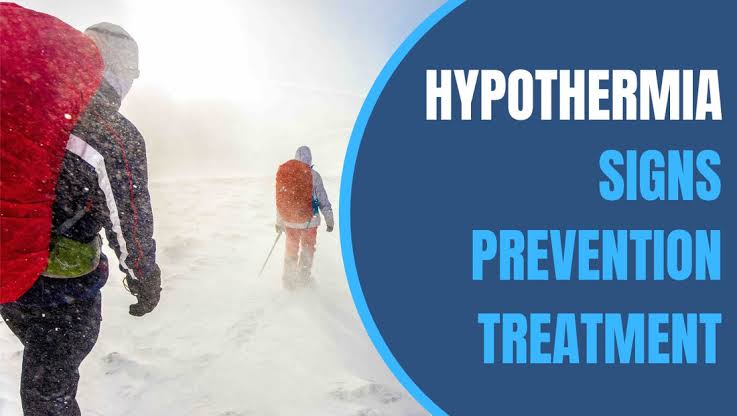- Get link
- X
- Other Apps
JUST IN
- Get link
- X
- Other Apps

Hypothermia is a medical emergency in which your body loses heat faster than it can produce it, causing a dangerous drop in the core body temperature. Without rapid and decisive treatment, the heart, lungs, and other organs can begin to shut down, leading to organ failure and death.
The primary aim is to remove the victim from the cold and to rewarm his or her body safely until emergency services arrive.
Medical treatment may involve passive rewarming, warming intravenous infusions, blood rewarming, and the irrigation of the lungs and abdomen with warm salt water.
Stopping Heat Loss
Hypothermia occurs when the core body temperature—the temperature of the organs and blood in the center of the body, not the skin—drops below 95 degrees.
This may happen in a number of situations, such as when someone is out in cold weather for too long or falls into icy water. People who are wet will lose body heat faster than those who are dry. Similarly, windy conditions can steal heat away from the body faster than in still conditions. People with severe injury also are at risk for hypothermia.
Move the person out of the cold, ideally to a dry, warm location. If you can't get indoors, shield the person from the cold and wind, keeping him or her in a horizontal position so that the blood can circulate more freely.
Remove wet clothing. Cut away the clothing if you need to and immediately cover the person with dry blankets or coats. Be sure to cover the person's head, leaving the face exposed.
Insulate the person from the cold ground if you are unable to get indoors. Use blankets, sleeping bags, or whatever clothing you may have on hand.
Call 911. If the person's breathing has stopped or is abnormally low, or the pulse is very weak, begin CPR if you have been trained to do so.
what next to do
- Be gentle. Avoid rubbing the person aggressively. Someone who has experienced severe exposure will often have an irregular heart rate. Jarring, moving, or massaging the person vigorously may trigger cardiac arrest.
- Give warming drinks. Do so only if the person is alert and able to swallow. Provide warm, sweet, non-caffeinated beverages. Avoid alcohol of any sort as this will only cool the body even further.
- Use warm, dry compresses, ideally a first aid instant warming compress (a plastic bag that heats up when squeezed), a dryer-warmed towel, or electric heating pad set on low.
- Avoid intense heat of any sort. This includes a blow heater, radiant heater, or a hot water bath. Overheating the skin can lead to tissue damage or, even worse, trigger potentially deadly arrhythmia (irregular heartbeats).
- Avoid warming the arms or legs as this forces the cold back to the heart, lungs, and brain, further lowering the body temperature and increasing the risk of organ failure. Instead, focus the attention primarily on the chest, groin, and neck where the major arteries are located.

Comments
Post a Comment
Let know your comments